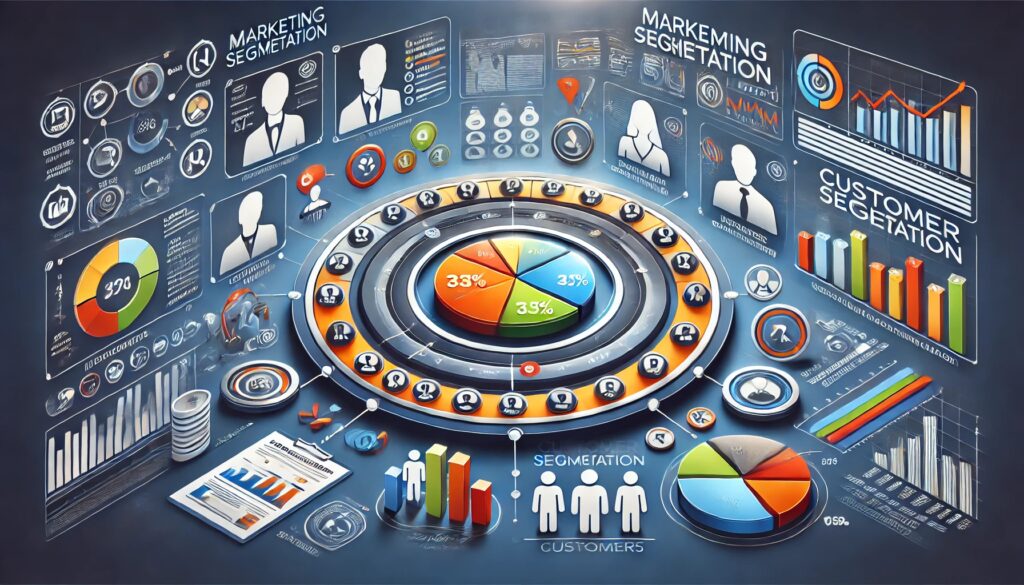AI and Business: Transforming Industries with Augmented Reality

Introduction
Artificial Intelligence (AI) and Augmented Reality (AR) are transforming the business landscape. By merging digital information with the physical world, AR creates immersive experiences, while AI enhances these experiences with intelligent interactivity. This synergy is not only reshaping industries but also revolutionizing consumer expectations. In this article, we’ll explore how AR, powered by AI, is being utilized in business, the benefits it offers, the challenges it presents, and what the future holds for these cutting-edge technologies.
Applications of AR in Business
Marketing and Advertising
In marketing and advertising, AR is a game-changer.
- Interactive product demonstrations: Customers can engage with products in innovative ways. For instance, automotive companies use AR to let potential buyers explore new car models from their homes.
- AR-based advertising campaigns: Brands create unique experiences that captivate audiences. Pepsi’s AR bus stop campaign in London thrilled passersby by overlaying animated scenes onto the real environment, showcasing AR’s power in capturing attention.
Retail and E-commerce
AR is revolutionizing retail and e-commerce by providing customers with enhanced shopping experiences.
- Virtual try-ons and fitting rooms: Shoppers can see how clothes, accessories, or makeup will look without physically trying them on. Apps like Sephora’s Virtual Artist enable users to test makeup products from their smartphones, making shopping more convenient and personalized.
- Enhanced product visualization: Retailers use AR to provide detailed, 3D views of products, helping customers make informed decisions. This leads to higher conversion rates and reduced returns.
Manufacturing and Maintenance
In manufacturing, AR aids in real-time operations and training.
- Real-time equipment maintenance and troubleshooting: Technicians use AR glasses to receive step-by-step instructions overlaid onto their field of view, streamlining complex repair tasks, increasing efficiency, and reducing errors.
- Training and skill development: AR simulates real-world scenarios, allowing employees to practice and hone their skills in a risk-free environment. Companies like Boeing use AR for training staff on intricate assembly processes, improving accuracy and productivity.
Real Estate
The real estate industry embraces AR for virtual experiences and visualization.
- Virtual property tours: Potential buyers explore properties remotely, saving time and broadening the reach of real estate agents. This allows marketing properties to a global audience.
- Visualization of architectural designs: Architects present designs in a real-world context, helping clients understand the scale and impact of a project. This leads to effective communication and quicker decision-making.
Healthcare
In healthcare, AR offers groundbreaking possibilities.
- Surgical assistance and planning: Surgeons visualize complex anatomical structures in 3D during procedures, enhancing precision and outcomes.
- Patient education and engagement: Patients use AR apps to understand medical conditions better, visualize treatment plans, and engage more actively in their healthcare. This leads to improved patient satisfaction and adherence to treatment plans.
Education and Training
AR is transforming education and training with interactive and realistic simulations.
- Interactive learning modules: Students engage with subjects in new and exciting ways, making learning more immersive and effective. AR can bring historical events to life or provide interactive 3D models of scientific concepts.
- Training simulations: AR provides realistic scenarios for practice and skill development across various industries, from military training to medical simulations.
Tourism and Travel
The tourism and travel industry leverages AR to offer immersive experiences.
- Interactive guides and tours: Tourists use AR apps to get detailed information about landmarks, museums, and historical sites in real time, enriching the travel experience.
- AR-enhanced travel experiences: From virtual city tours to augmented maps, AR helps travelers navigate and enjoy their destinations in innovative ways.
Benefits of AR in Business
Improved Customer Engagement
AR significantly improves customer engagement by creating immersive and interactive experiences. Customers interact with products and services meaningfully, increasing interest and satisfaction, leading to higher engagement and loyalty.
Increased Sales and Conversion Rates
By providing better product visualization, AR helps customers make informed decisions, increasing sales and conversion rates. When customers see exactly what they’re buying, they’re more likely to complete the purchase and less likely to return the product.
Cost Efficiency
AR offers cost efficiency by reducing the need for physical prototypes and resources in product development. Training and maintenance costs are also lowered, as AR provides effective virtual simulations and real-time assistance.
Competitive Advantage
Businesses that adopt AR gain a competitive advantage by differentiating themselves from competitors. Innovative marketing, enhanced customer experiences, and efficient operations set these companies apart in the market.
Role of AI in Enhancing AR
Computer Vision
AI-powered computer vision enables AR systems to recognize and track objects in real time. This allows for seamless integration of virtual elements into the real world, creating more realistic and engaging AR experiences.
Machine Learning
Machine learning enhances AR by personalizing experiences and providing predictive analytics. AI analyzes user behavior and preferences to tailor AR content, making interactions more relevant and engaging.
Natural Language Processing (NLP)
Natural Language Processing (NLP) enables voice-activated AR interfaces, allowing users to interact with AR applications using natural language. This makes AR more accessible and intuitive. NLP also supports multilingual interactions, broadening the reach of AR applications.
Data Analytics
Data analytics powered by AI provides valuable insights into customer behavior and preferences. Businesses can use this data to optimize AR content and strategies, improving user experiences and achieving better outcomes.
Challenges of Implementing AR in Business
Technical Challenges
AR implementation faces technical challenges such as hardware limitations and software development complexities. Developing high-quality AR experiences requires advanced technology and expertise, which can be a barrier for some businesses.
Cost and Investment
The high initial investment for AR technology and the ongoing costs for maintenance and upgrades can be significant. Businesses need to weigh these costs against the potential benefits to determine if AR is a viable option for them.
User Adoption
User adoption can be a challenge, as some users may be resistant to new technology or find it difficult to learn. Providing adequate training and support is crucial to ensure a smooth transition and encourage widespread adoption.
Privacy and Security
Privacy and security concerns are critical when implementing AR. Protecting user data and ensuring compliance with regulations are essential to maintaining trust and avoiding legal issues.
Case Studies and Examples
Successful AR Implementations
- IKEA Place App: This app allows customers to place virtual furniture in their homes to see how it fits and looks. It’s a prime example of how AR can enhance the shopping experience and boost sales.
- Sephora Virtual Artist: Sephora’s AR app lets users try on makeup virtually, providing a personalized and convenient shopping experience that drives customer engagement and sales.
Lessons Learned from AR Failures
- Google Glass in Enterprise: Despite its innovative concept, Google Glass faced challenges in user adoption and practical application, highlighting the importance of usability and real-world functionality.
- Blippar’s Business Model Challenges: Blippar’s ambitious AR projects struggled with scalability and monetization, underscoring the need for sustainable business models and clear value propositions.
Future Trends of AR in Business
Advances in AR Hardware
Development of lightweight and comfortable AR glasses is on the horizon. These advances will make AR more accessible and user-friendly, driving broader adoption across industries. The integration of 5G technology will further enhance AR performance, enabling smoother and more responsive experiences.
Evolution of AI Capabilities
AI capabilities are continually evolving, leading to improved algorithms that enhance AR experiences. These advancements will result in more realistic and adaptive AR applications, providing greater personalization and utility.
Expansion into New Industries
AR has the potential to expand into new industries such as financial services and agriculture. For example, AR can visualize financial data for better decision-making or assist in precision farming by overlaying real-time information on crops.
Collaboration and Interoperability
Cross-platform AR solutions and industry partnerships will drive the development of standardized AR applications. Collaboration between companies and industries will facilitate interoperability, making AR more versatile and widely adopted.
Conclusion
AR and AI are transforming the business world, offering innovative solutions and unparalleled experiences. From improving customer engagement to increasing efficiency and gaining a competitive edge, the benefits of these technologies are immense. As AR and AI continue to evolve, businesses must strategically implement and embrace these advancements to stay ahead in the rapidly changing landscape.
By understanding the applications, benefits, challenges, and future trends of AR, companies can harness its potential to drive growth and innovation. The future is bright for businesses that leverage the power of AR and AI, and the possibilities are endless.
Explore the transformative power of AR and AI today and lead your business into the future of innovation.
References
A. Academic Journals
- Journal of Business Research: Articles on the impact of AR on consumer behavior and engagement.
- International Journal of Information Management: Studies on AI integration in AR applications.
- Computers in Human Behavior: Research on user interaction and acceptance of AR in various industries.
- Journal of Retailing: Insights on AR’s influence on retail and e-commerce.
B. Industry Reports
- Gartner: Annual reports on emerging technologies including AR and AI.
- PwC: Publications on the economic impact of AR and AI in business.
- McKinsey & Company: Industry analysis and future trends in AI and AR.
- Deloitte: Reports on digital transformation and the role of AR in business innovation.
C. Case Study Sources
- Harvard Business Review: Case studies on successful AR implementations in marketing and retail.
- MIT Sloan Management Review: In-depth analysis of AR applications in manufacturing and healthcare.
- Forrester Research: Case studies on AR’s role in enhancing customer experiences.
- Ivey Business Journal: Examples of AR and AI integration in real estate and education sectors.
D. Technical Manuals and Guides
- Microsoft HoloLens Developer Guide: Technical documentation for developing AR applications.
- Unity AR Development Handbook: Comprehensive guide for creating AR experiences using Unity.
- Apple ARKit Documentation: Official manuals for building AR applications with ARKit.
- Google ARCore Developer Guide: Technical guides for developing AR applications using ARCore.
These references provide a wealth of information and insights into the use of AR and AI in various business contexts, supporting the detailed exploration presented in this article.





